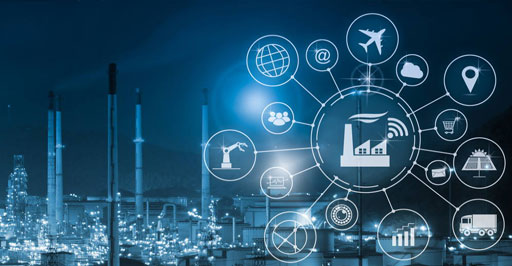resources
Our innate ability and culture to innovate both in the field of electronics as well as in IT set us apart. Today’s industries in their strive for providing the best in the class communication system to their workforce is going farther and farther away from creating effective channels. The need of the hour is to create a potent and compelling collaboration system that would help the workforce carry out the task in a more efficient manner.
Our expertise lies in making heterogeneous systems talk to each other forming a homogeneous communication platform. Our world-class equipments are designed on globally approved Open-Standards for communication and hence gets integrated with current existing industrial setup without any fuss.
Keeping in mind the overwhelming rate at which the electronics and software innovations are happening it’s imperative that we use the top of the class hardware which supports the current and future software and firmware upgrades making a device relevant in a true manner for a longer duration.
Nextgen Industrial Gadgets

Our devices are IP68 rated and comply with all the IS standards. Making use of open-standards the devices are powered by Android™ OS. The rugged nature of devices makes it withstand harsh environments with extreme heat or cold. Based on the requirement to meet the demanding nature of our client’s workforce the devices have built-in features like an amplified loudspeaker, SOS, PTT over Cellular, Dual Band frequency communication, NFC, dual sim, extended memory slot, belt-clit, drop-in chargers, etc.

Introduction to intrinsic safety
Intrinsic Safety (IS) is a protection technique for safe operation of electronic equipment in explosive atmospheres and under irregular operating conditions. The concept was developed for safe operation of process control instrumentation in hazardous areas. As a discipline, it is an application of inherent safety in instrumentation.
Fire is a hazard in many industries. Sometimes the risk is quite evident, as when flammable gasses like hydrogen and propane are being produced or handled, but in other situations it is less obvious. In particular, dust can often be highly combustible.
A fire needs fuel, oxygen and an ignition source. Flammable gasses, vapors and dust provide the fuel, oxygen is present in most environments, and ignition can come from a spark or hot surface. Every fire is dangerous, but in more extreme cases combustion is so rapid as to cause an explosion.
Preventing fire and explosions is a top priority as no business or organization wishes to be responsible for causing death and injury. Additionally, the direct financial penalties of such events – punitive fines and increased insurance premiums— can cripple a previously successful operation.
The theory behind intrinsic safety is to ensure that the available electrical and thermal energy in the system is always low enough that ignition of the hazardous atmosphere cannot occur.
In normal uses, equipment often creates internal tiny sparks in switches, connectors, and in other places. Such sparks can ignite flammable substances present in air. A device termed intrinsically safe is designed to not contain any components that produce sparks, or which can hold enough energy to produce a spark of sufficient energy to cause an ignition.
Another aspect of intrinsic safety is controlling abnormal small component temperatures. Under certain fault conditions (such as an internal short inside a semiconductor device), the temperature of a component case can rise to a much higher level than in normal use. Safeguards, such as current limiting by resistors and fuses, must be employed to ensure that in no case can a component reach a temperature that could cause autoignition of a combustible atmosphere.
In order to have a fire or explosion, fuel, oxygen and a source of ignition must be present. An intrinsically safe equipment assumes the fuel and oxygen is present in the atmosphere, but the it is designed so the electrical energy or thermal energy of a particular instrument loop can never be great enough to cause ignition. Intrinsic Safety (IS) is an approach to the design of equipment going into hazardous areas. The idea is to reduce the available energy to a level where it is too low to cause ignition. That means preventing sparks and keeping temperatures low.
Such environments include oil rigs and refineries, gas mains, coal mines, engine rooms of seafaring vessels, chemical plants, factories, emergency scenes involving First Responders, and other environments where there are potentially explosive or hazardous materials. It's the technology and expertise that turns noise into information, information into intelligence, and intelligence into safety. Improved communication leads to greater productivity, which, in turn, drives improved performance.
Protecting People and Property
Many industrial, chemical and process environments have significant explosion risks. This could be due to the presence, actual or possible, of flammable gases and vapours, dust particles and/or fibres. Such environments are termed as “hazardous” and it is essential that they are designed so as to eliminate the possibility of igniting the flammable material. IS design minimizes power and heat creation. Equipment must be independently certified as Intrinsic Safety.
Often it’s necessary to incorporate instrumentation of an electrical nature in such environments. When this is unavoidable there are three possible approaches: put the equipment in an explosion proof enclosure, purge the enclosure with inert gas, or adopt Intrinsic Safety design principles.
The word intrinsic refers to the essential or real nature or value of something. In electronics it refers to the very nature of an electronic device as being electrical; an item that operates using electricity. Any electronic device, by its very nature, carries an electrical current or charge. Therefore the chance of an electrical spark or heat emanating from the device is inherently present or a possibility at all times.

Wherever an explosive gas, mist, vapour or dust is present it creates a potential risk of explosion. Intrinsically Safe means the device is safe to use in hazardous environments where the presence of a potential spark, heat or flame could potentially create a safety hazard. In the case of two way radios, this is especially important, since radios are electrical, they do have the potential to generate sparks and heat, and there are many situations in which a radio may need to be used in potentially hazardous or explosive environments.

